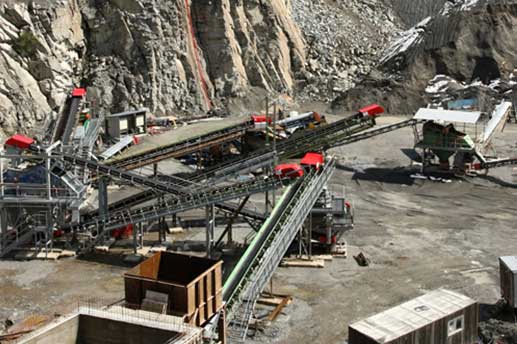Increasing plant uptime through correct v-belt maintenance

V-belt drives provide a versatile method of power transmission in the mining and quarrying industry. Often viewed as a cost-effective solution, these belts are used in a vast array of aggregate applications. However, a v-belt failure can result in hours or even days of unplanned downtime, racking up costs by the minute.
Although v-belts are typically low maintenance components, regular inspection is beneficial to identify where maintenance could help to extend machine life.
Here is a simple guide to v-belt maintenance to help you to reduce downtime for your mining and quarrying machinery.
1. Monitor belt tension
Arguably the most important part of v-belt maintenance is ensuring that the belt’s tension is optimum. A belt that is too loose is likely to slip, causing excessive wear on both the belt and pulley. Loose belts also cause a large amount of energy loss, which consequently leads to a reduction in productivity. A belt that is too tight will put an increased level of strain on connected belts, bearings and shafts, leading to premature wear of these components.
Although a v-belt may be correctly tensioned during fitting, the tension needs to be checked throughout its service life as stretch can occur over time. The ideal v-belt tension is the lowest tension at which the belt won’t slip or squeal under peak loads. Regularly checking belt tension can help to extend service life of both the v-belt itself and surrounding components.
Alternatively, maintenance-free v-belts are becoming increasingly available. These belts have an improved polyester tension cord along with an abrasion resistant cover. They do not require any re-tensioning once they have been correctly installed, reducing the time required for maintenance.
2. Regular cleaning
Contaminants such as dirt, grease and oil reduce the lifespan of even the most resilient v-belts, and the harsh conditions of the mining and quarrying industry mean that there is no shortage of contaminants around.
Although v-belts are typically low maintenance components, when used in aggregates environments they may benefit from occasional cleaning to remove the build-up of any foreign material from the belt’s surface.
Wipe the belt with a dry cloth to remove any dirt. If any grease or oil has come into contact with the belt, it may also benefit from being cleaned with methyl chloroform or soap and water which are able to cut through the grease. Always check the manufacturer’s instructions before applying any cleaning products to the belt. It’s also crucial to avoid inflammable cleaning products such as gasoline to maintain safety.
Regular cleaning can help to extend v-belt life in the mining and quarrying industry, helping to keep your downtime to a minimum and reducing your costs.
3. Protection
In harsh environments such as the mining and quarrying industry, contaminants such as dirt and sand often damage delicate machinery. V-belts are able to stand up to demanding conditions, but even the most resilient of v-belts has its limits.
Belt guards are usually installed to protect workers from flying contaminants, but they are also useful for preventing abrasive contaminants from entering the v-belt drive. Belt guards should be properly ventilated to avoid over-heating. They should also be checked regularly for damage and for loose bolts which could cause the v-belt to come into contact with the guard and lead to damage.
4. Alignment
Misaligned pulleys are one of the most common causes of premature v-belt failure as they can lead to excessive belt wear, as well as pulley wear. When the shafts are not completely parallel, the load distribution becomes uneven, causing premature wear of the v-belt. If the pulleys are not correctly aligned, the v-belt will enter and leave the pulley at an angle, causing excessive pulley wear.
Regularly check the alignment of the v-belt drive, including both the shafts and the pulleys. This will help to minimise wear on both the v-belts and the pulleys, reducing the chances of premature failure.
5. Monitor bearings
Finally, it’s important to monitor the condition of bearings within a v-belt drive. An elevation in the temperature of these bearings could be the first sign of a problem within the v-belt drive.
If the bearings in your v-belt drive are hot, first check the tension of your v-belts. If the belts are slipping, this could be causing excessive friction, leading to waste energy in the form of heat. Another common issue which could be causing bearings to overheat include improper lubrication within the bearing.
Regularly inspecting these bearings could help you to identify a potential issue early, allowing for corrective maintenance to be performed before failure occurs.
For further advice about how to maintain your v-belt drives in the mining and quarry industry, contact your local sales team today.
